
It allows to keep PV going, with more focus towards AI, but keeping be one of the few truly independent places.
-
If you're going to get a variable ND, Marumi is definitely a high quality option easily on par with Tiffen's VariND. You just want to make sure that you are getting an authentic Marumi product-- there are a lot dubious Marumi-branded filters on eBay and Amazon. 2Filter is a good vendor though. They know their stuff.
-
In my first clip with the GH4 one could see softness in some daylight shots. Most likely it was caused by a cheaply Vari-ND: vimeo.com/95081191. So I have bought a better one - the Heliopan (77mm). I´m entirely satisfied with this one so far. Take a look and build your own opinion. The first 70 seconds were all shot with the Heliopan - mainly on a street party around the corner. At the end you can watch a side by side comparison: the left side were always shot with the Heliopan.
Footage is untouched - just some stabilization in post. UHD / 29.976 downscaled to 1080p.
Iso: 200-800 Camera: Panasonic GH4 + old Kit 14-140
-
Very interesting video @VK thanks for posting
Now 1 thing is theory and another practice, ideally they can shake hands :P
So I did the test myself and it I can confirm that genustech eclipse clearly tints footage blueish or brownish depending on polarisers' angle. Now, in practice, Aron's method it's not practical at all. Why? It is not only that is time consuming if on a tripod, it is not that's a PITA when handheld it's because it kind of defeats the purpose of variND, at least for me... in some situations.Explaining; if I'm using native µFT lens or one which is not declicked or still I want to keep same DOF while changing sceneries and overall lighting in a run and gun chicken style, I'm going to control light with vND, so even if I set it to it's "purple mode" that's gonna change as soon I start rotating it.
Ok, problems have solutions and the joyful path to reach them (I should have been a priest, but one of those who can marry and fuck their way to heavens, sorry bitt OT). As starters I think helps this method to use a led torch with white paper between it and the polariser and point them to the lens, seems easier to spot the right tint in broad daylight. Secondly - and please this are still very early notes - I've noticed that no matter what light conditions, eclipse vND seems to more rapidly shift into brown tint at the beginning and end of it's range. Also the amount of rotation needed to shift the tint to purple is not that much, maybe 15, 20 º. So it shouldn't be very difficult to use this great idea of double rotatory system and establish correlative markings between amount of ND effect and tint. This is now theory but, ideally, one would be able to compensate live when shooting.
If there are more PVs using eclipse... or other vND with similar effect, we could think better together ,-)
Don't worry master @Vitaliy IF that happens we would open a shinny new thread :P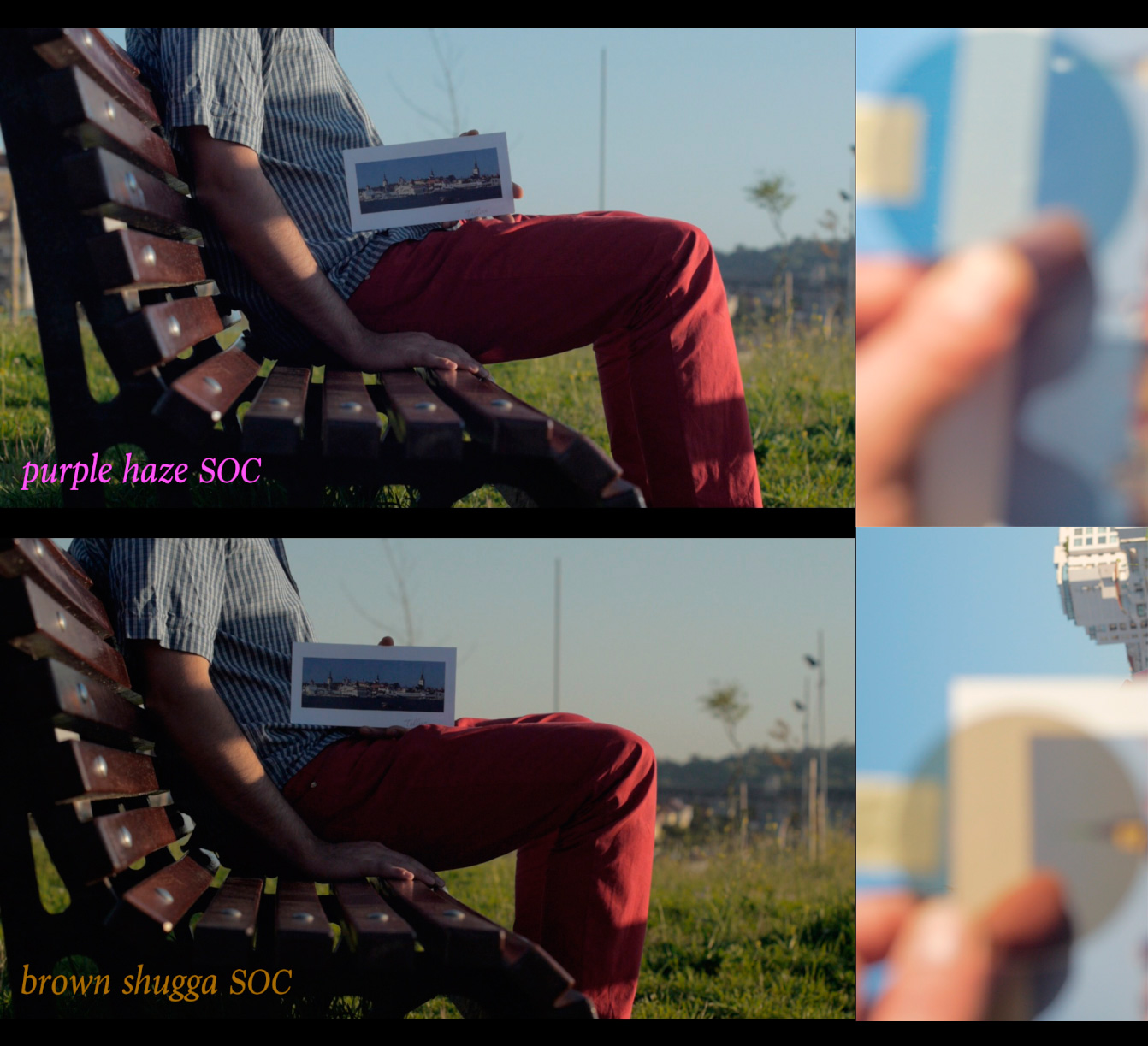
-
I ordered a Fotga 46mm Slim Wide Band Fader ND (W) to use with my original model 20mm f/1.7. I wouldn't normally use a variable ND filter, but I wanted a compact, lightweight "walking around" setup so my mattebox and 4x4" Schneider NDs were out of the question.
The filter arrived in three pieces - the front retaining ring and front glass had fallen out. The front glass had left a crescent-shaped scratch on the rear glass, but nothing that would affect the image. I put it back together, taking a few tries to get the retaining ring screwed down tight while not shifting the front glass from alignment so the min-max markings would be valid.
The design of the original 20mm gave me problems with 46-49mm step-up rings binding the lens as it focussed to infinity, because the filter thread of the lens is recessed very tight into an outer lip, but the bevelled edge of the Fotga filter meant that it fit without any problems. I did not need to use the 46mm UV filter which I removed the glass from to make a stand-off ring for clearance purposes.
There are 49mm filter threads on the front of the Fotga. The polarizing effect is strong, one of the reasons I wouldn't normally use a fader ND. I might buy a cheap 46mm polarizer filter and remove the glass from it, so that can first be mounted to the lens, then the fader ND - that way, I can dial the fader to the level of ND I need, and then rotate the whole assembly together to adjust the polarizing effect. I don't expect to see any vignetting on the 20mm, but it would need to be tested to know for sure.
I don't get any wide-angle lens "X" problems or uneven density in the frame, but the 20mm isn't very wide.
I don't see any softening of the image when I did some on/off comparison tests, but the 20mm isn't very telephoto.
Setting the filter to max leads to a noticeable loss of contrast, with light flaring into the shadows and midtones. But that's a crazy amount of ND for anything other than long time exposures, and using the filter at the second or third dot down from max is more than enough for general use, and doesn't show any loss of contrast. This assumes that your filter was/is aligned at the factory just as I aligned mine. It's very easy to see the max setting as it quickly "tips over" from that point, so that's what I went by.
There's a slight, and consistent, yellow/green colour shift. Easily corrected in post, I adjust my WB one point towards magenta and one point towards blue, which gets it pretty close to begin with.
As for infrared contamination, the GH2 is pretty good on its own compare to other cameras I've worked with, and with the filter I don't see any difference at all. That's good, but probably says more about the GH2 than the filter - other cameras that have infrared contamination issues may see them exacerbated by the filter.
Overall, YMMV with other focal lengths, but for the Panasonic 20mm, I'm quite pleased., and have no plans to buy a more expensive variable ND filter for this particular lens.
-
re. polarization effects, not all faders act as polarizers. That was actually a big deal for me as I shoot 3D with two cameras (GH2s), and as the filters always screw on differently on two bodies, each would get a different amount of reflections (a disaster in 3D).
Faders are really two polarizers, but there are two ways of doing it: using only linears, or a circular and a linear. If you find one with a circular at the front, it effectively unpolarizes the light before it fades, so the fader no longer acts as a polarizer at all.
Years ago I did eventually find faders like that, they just happened to be the cheapest on Ebay and not bad at all.
-
@_gl :
Two linear polarizers will give you a fader, but it will prevent phase-detect AF from working.
Two circular polarizers will give you a fader with wildly varying colour.
A circular polarizer mounted closest to the lens, and then a linear polarizer on the outside, will give you a fader with phase-detect AF working, and without much colour change.
A linear polarizer mounted closest to the lens, and then a circular polarizer on the outside, will not give you a fader. The circular polarizer un-polarizes the light as it exits the filter, and you need polarized light interacting with the next polarizer to give you a fader effect.
-
I purchased a cheap ND32 filter from eBay, and the brand name wasn't listed. It was cheap, and it turned out to indeed be too good to be true.
What arrived was branded "SINGLEE" on the package, and the filter had only "ND32 72mm" printed on the ring.
The filter is not glass, it's plastic. It came pre-smudged, and was very difficult to clean, probably the worst thing about plastic filters.
It's supposed to be an ND32, but it's denser than a high-quality ND64 that I own. There is an unbelievably strong purple cast to the filter, and once that is corrected for, I was left with a very low-contrast image.
It's totally unusable.
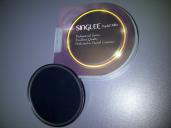
 Singlee.jpg640 x 480 - 78K
Singlee.jpg640 x 480 - 78K -
@Strangways, you might be right about phase-AF, I haven't used a body like that in many years.
But you're wrong on the last point. A circular does not actually unpolarize the light, rather it randomises the polarisation rotation - so any that has a specific pola rotation (eg. from a reflection) is no longer uniform, and the problem goes away.
A circular is actually composed of a linear polarizer layer, and a quarter-wave retarder layer. The fader I have uses a circular at the front, and a linear at the back. The retarder is at the very front, and randomises the incoming polarisation. The actual fading is then done by the two linear polarizers behind it.
It does work, I've been using mine on my GH2's to shoot 3D for years.
-
@_gl I was trying to keep things simple with "unpolarize" but yes, randomizing the polarization is a better description of a quarter-wave retarder. What I said may have made it seem like it reverses the effect of the polarization, which is not the case. To be technically accurate, a circular polarizer converts unpolarized light into linearly polarized light, and then into circularly polarized light.
Usually a circular polarizer has the quarter-wave retarder at the back, and I thought you were suggesting finding (or creating a stack of) a circular polarizer then a linear one, which would end up as linear polarizer, quarter-wave retarder, linear polarizer, which wouldn't give you a fader.
If what you've found is a specially-made fader that is quarter-wave retarder, linear polarizer, linear polarizer, then it should work as you described, but I've never seen one.
A fascinating discussion - usually I don't get much further than people thinking a circular polarizer means the filter is physically circular, rather than square!
-
@Strangways understood. It took me a few attempts to find a fader like this (not a stack), and it just happened to be the cheapest generic fader I could find on Ebay from China (or Hong Kong, I forget).
It was pure luck and I can't explain why they made it like this, maybe they just didn't know the convention and did their own thing. If having a linear at the back causes phase AF issues, that explains why most people wouldn't design them like this.
But it was crucial for my use to not have polarizer effects, and it's actually decent quality. There is a small colour shift as you rotate it, but it's nothing the auto-white balance can't handle, and the image quality has never been a problem on my GH2's.
-
.. thinking about it, a traditional fader design (front->linear,linear,retarder) is exactly the opposite of mine. So maybe they simply reversed it by mistake! Not unheard of for cheap generic stuff.
Which also means that (if you don't need phase AF), you could just reverse a standard fader to get the same effect! I've never tried to remove glass from a filter, maybe it can be done? Or can you get adapter rings that allow you to mount a filter backwards?
-
@_gl Usually with a fader you only have two pieces of glass - the quarter-wave retarder, if there is one, is a plate that is bonded in with one of the polarizer. So figuring out where it is in would be tricky, but once you did, you could swap and/or flip the glass as needed.
Good filters have retaining rings with little notches you can use a filter wrench/adjustable spanner on (see tool in the top left of the photo) to unscrew, and then the glass will drop right out.
Cheap filters have a spring, with a gap in one section, that you can just pry out.
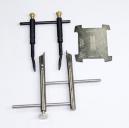
 2.jpg525 x 519 - 51K
2.jpg525 x 519 - 51K -
@_gl I just saw your post from July 2011 (http://personal-view.com/talks/discussion/comment/5377#Comment_5377) talking about RealD 3D glasses. The unpleasant colour shifts you mentioned are due to the fact that you had two circular polarizers. This was actually an intended effect with the Cokin 173 Varicolor blue/yellow, and the Singh-Ray Gold-N-Blue Polarizer.
Note that RealD 3D glasses have the quarter-wave retarder in front, unlike the typical circular polarizer filter, so this may play in to your experiments.
-
@Strangways, wow, I couldn't remember those posts at all.
Thanks for the filter disassembly info, I will have to try it some time. But anybody with a normal fader can just try holding it backwards in front of their lens, it should avoid the polarizer effects. Does it work?
If yes, a simple gender-changing filter adapter (so you can reverse-mount the fader) could convert it. Except I can't seem to find any, do they exist?
-
@_gl My Fotga Slim Wide Band Fader ND polarizes just the same no matter which way it is facing.
As for the rings you are looking for, Fotodiox makes them, for one. http://www.fotodioxpro.com/catalogsearch/result/?q=filter+to+filter+reversing
Also, this company on eBay: http://stores.ebay.com/yuanchuangli/Double-Coupling-Ring-Adapter-/_i.html?_fsub=5380295016
-
@_gl My Fotga Slim Wide Band Fader ND polarizes just the same no matter which way it is facing.
It must be two linears then.
As for the rings you are looking for, Fotodiox makes them
Ah! I actually saw them described somewhere yesterday, but incorrectly assumed they were filter<>lens mount adapters. Perfect.
EDIT: the only catch is that faders usually have a larger filter thread at the front, so you'd also need a stepup ring... and if you're already close to the edges with a wide-angle, it just got tighter at the far end : ).
EDIT2: ... you can even get them with different size threads at each end, eg. http://www.ebay.co.uk/itm/290944033598
-
Time for some more ND filter tests! This time, 4x4" glass filters. I've owned and used Schneider 4x4 Tru-pol and grad ND filters for at least 7 years and have been perfectly happy with them. See the first photo. (All have a fixed daylight white balance and are ISO 200)
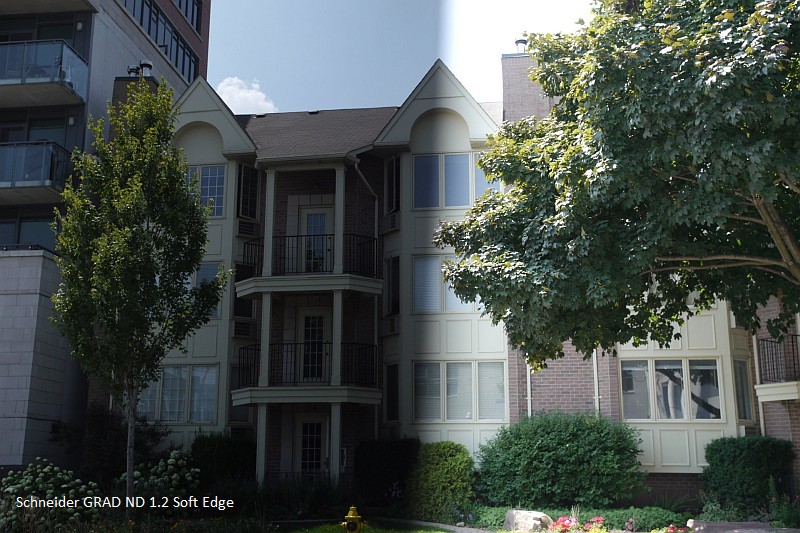
So when I needed a (non-grad) 4x4 ND1.2, I ordered the Schneider one from B&H, product number 68-041244. I was quite shocked to find it had a strong purple cast to the image, and it didn't look like IR contamination, which shouldn't be an issue anyway on my GH2 with that level of ND. See the second photo.
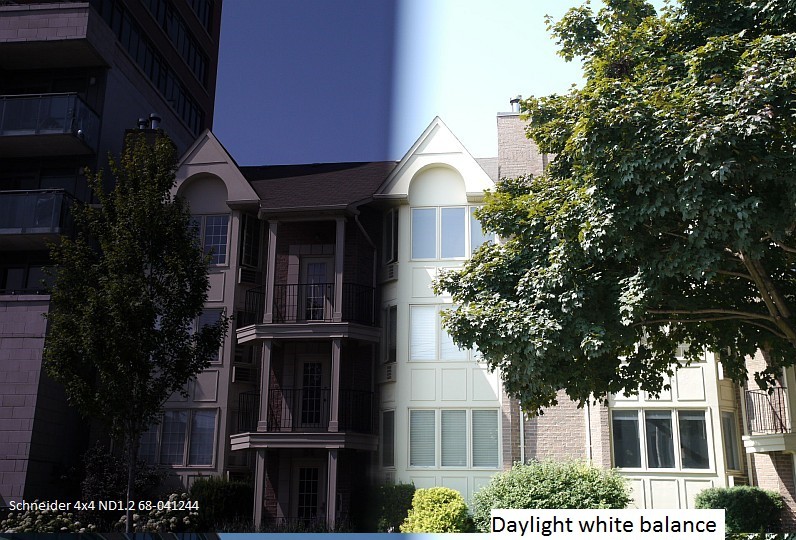
I got in touch with B&H, who told me that the colour cast was to be expected. So I contacted Schneider who were extremely helpful, and I replaced it with a 4x4 Platinum IRND1.2, product number 68-061244. This one looks beautiful. See the third photo.
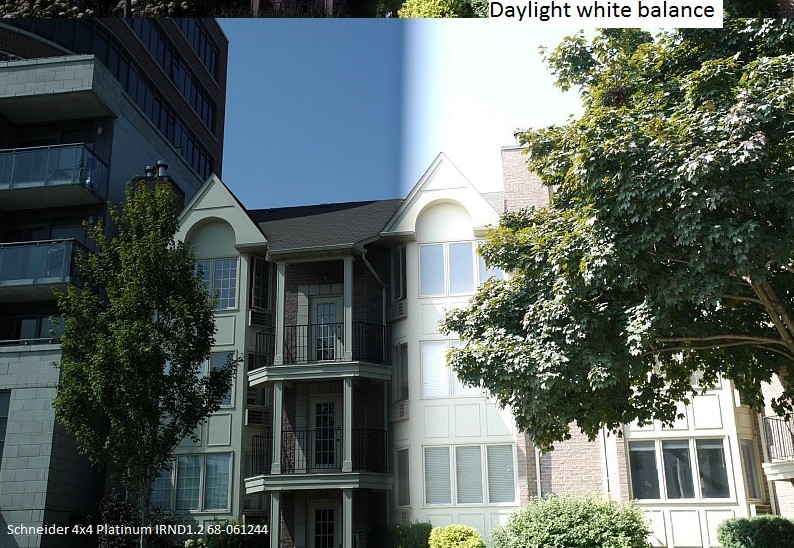
I wanted to pick up an ND0.6 (AKA ND4) next, but I couldn't afford another platinum, and I was now really skeptical about the quality of the regular Schneider line, especially after reading B&H review comments like: "This, like all the Schneider filters I bought, shifted the colors so significantly to red/pink that I sent it back." http://www.bhphotovideo.com/c/product/251624-REG/Schneider_68040644_Neutral_Density_ND_0_6.html#costumerReview"
I decided to give the "Glass 4x4 ND Filters" available here in the deals section. I figured, being quite picky about filter quality, that I was risking $41, but that was better than risking $170. http://www.personal-view.com/deals/filters/other-filters-holders
The result? See the fourth photo. It was taken at a completely different time of day, and please excuse my thumb in the photo, but I'm seeing no loss of sharpness on a 16 megapixel still, and the colour is perfect, just like the $260 Schneider Platinum! Thank you, Mr. Kiselev!
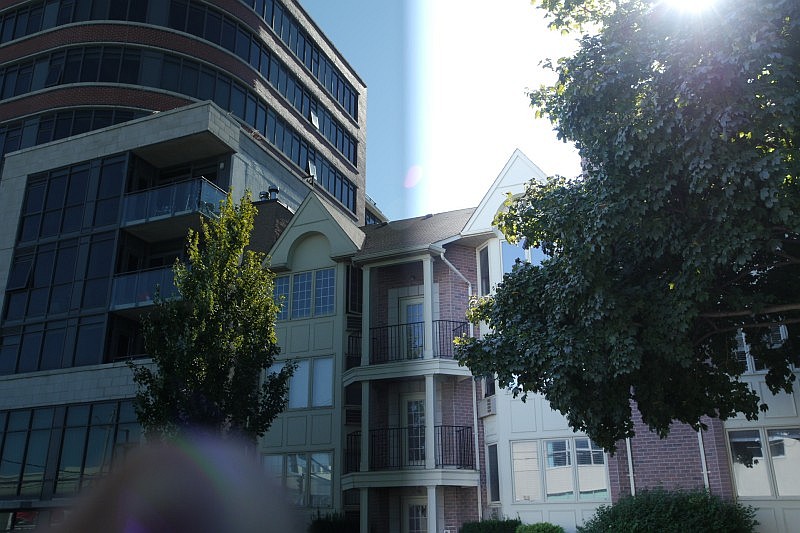
(I just realized the first three photos had sharpening added, but the fourth didn't. So I re-uploaded the fourth with sharpening. I don't have permission to delete the third image, but if a mod could do it...)

 GradND1p2SE.jpg800 x 533 - 148K
GradND1p2SE.jpg800 x 533 - 148K
 ND1p2.jpg796 x 540 - 158K
ND1p2.jpg796 x 540 - 158K
 ND1p2_Platinum.jpg794 x 548 - 175K
ND1p2_Platinum.jpg794 x 548 - 175K
 P-V_ND4.jpg800 x 533 - 122K
P-V_ND4.jpg800 x 533 - 122K -
In conclusion, dont exist a good ND 4x4 under $40 :-(
-
Well, yes.
Check https://www.ephotozine.com/article/cokin-nuances-nd1024-10-stop-filter-review-27892
It is new premium Cokin filters, they finally promise good performance.
-
Better throw an infrared filter in front of it, the IR contamination in their sample photo is truly horrific.
-
I have just today sent back to Amazon two sets of Cokin Z154 ND8 filters. They slipped out of my 4x4 filterholder, since they aren't really 4" by 4" but 100mm x 100mm. The difference seems marginal but it was enough to make them unusable in my mattebox. I then ordered Tiffen 4x4s.
Edit: My filterholder is 103,8mm tall and those little "lips" were to short to grab on to the filter.
-
@Vitaliy_Kiselev, thank you very much. I little later, I was desperate because I need record a video and here is very sunny and last night buy the ICE ND1000 ( http://www.amazon.com/gp/product/B00LE25120?psc=1&redirect=true&ref_=od_aui_detailpages00 ) unknown, but the little references are good.
The new Cokin Nuances ND1024 now isnt on sale at amazon USA where I order cause is near and quick for me; Im in the Caribbean (Dominican Republic), so that is possible to have the purchase in less than a week.
Howdy, Stranger!
It looks like you're new here. If you want to get involved, click one of these buttons!
Categories
- Topics List23,993
- Blog5,725
- General and News1,354
- Hacks and Patches1,153
- ↳ Top Settings33
- ↳ Beginners256
- ↳ Archives402
- ↳ Hacks News and Development56
- Cameras2,368
- ↳ Panasonic995
- ↳ Canon118
- ↳ Sony156
- ↳ Nikon96
- ↳ Pentax and Samsung70
- ↳ Olympus and Fujifilm102
- ↳ Compacts and Camcorders300
- ↳ Smartphones for video97
- ↳ Pro Video Cameras191
- ↳ BlackMagic and other raw cameras116
- Skill1,960
- ↳ Business and distribution66
- ↳ Preparation, scripts and legal38
- ↳ Art149
- ↳ Import, Convert, Exporting291
- ↳ Editors191
- ↳ Effects and stunts115
- ↳ Color grading197
- ↳ Sound and Music280
- ↳ Lighting96
- ↳ Software and storage tips266
- Gear5,420
- ↳ Filters, Adapters, Matte boxes344
- ↳ Lenses1,582
- ↳ Follow focus and gears93
- ↳ Sound499
- ↳ Lighting gear314
- ↳ Camera movement230
- ↳ Gimbals and copters302
- ↳ Rigs and related stuff273
- ↳ Power solutions83
- ↳ Monitors and viewfinders340
- ↳ Tripods and fluid heads139
- ↳ Storage286
- ↳ Computers and studio gear560
- ↳ VR and 3D248
- Showcase1,859
- Marketplace2,834
- Offtopic1,320






